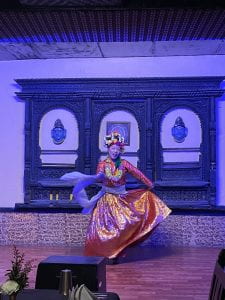Written by Tavis Mansfield
Today we visited several Hindu and Buddhist temples around Kathmandu: Pashupatinath Temple, Boudhanath stupa (temple), and the Swayamhunath Stupa. The smoke from cremations and temples that reflected the deep religious culture tell just a bit of what makes Nepal stand out. The people crowded in one place for so many purposes, some prayer, some sight seeing and some for peace. Trying to absorb this world in a day.
The temples showcased both Hindu and Buddhist cultures and the crowds of people reflect the hope and grace that the diverse population is made out of. Understanding the art that reflected various gods and deities made the aesthetic value of the architecture even more valuable.
In all, this country is eye opening. We have more days to discover the agricultural abilities of the landscape and as of now the mountains have shown us that the range to development are boundless.
In the evening we had dinner in Thamel with special guests from the Engineers Without Borders (EWB) team from the University of Florida, collaborator and professor at Kathmandu University Dr. Bim Prasad Shrestha, and Mr. Ganesh Shah, the former Minister for Environment, Science and Technology.
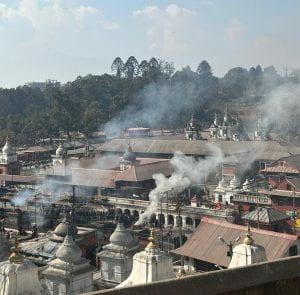
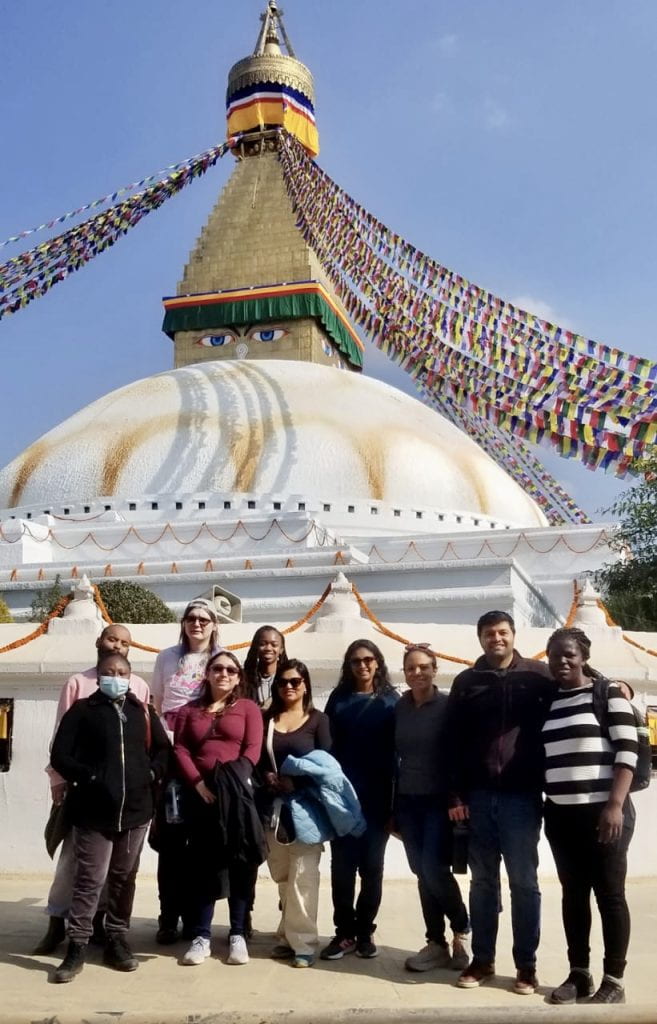
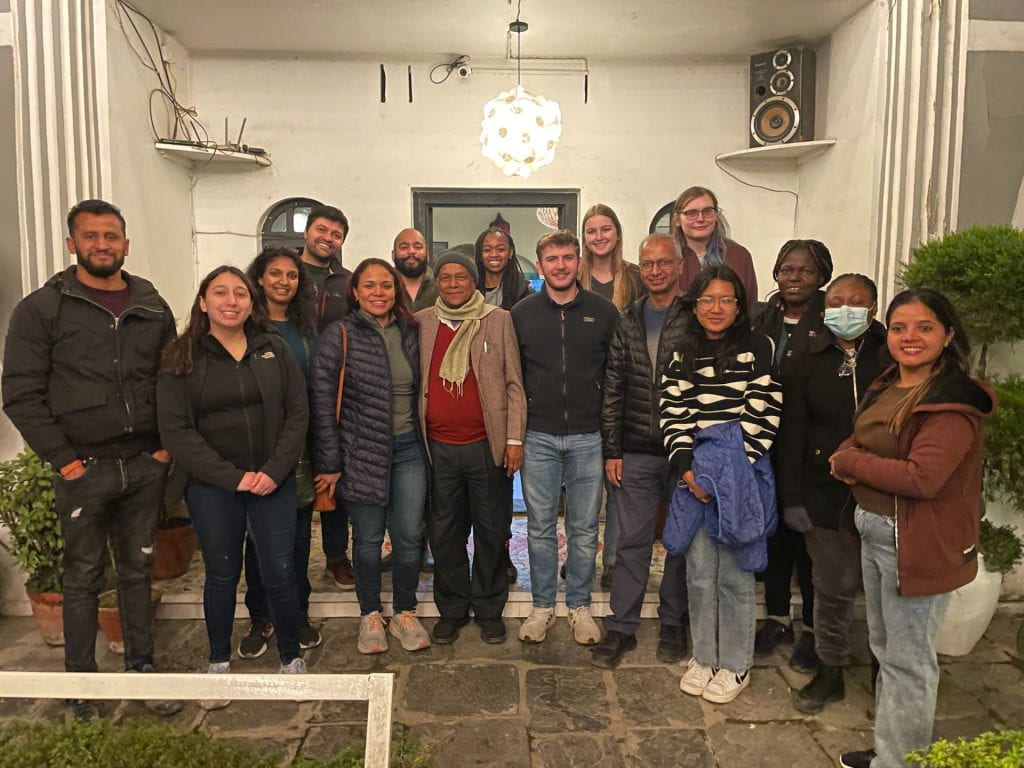
Day 2: Friday January 5 – Visit to Bhaktapur and arrival at Sanskriti farms
Written by Camila Proano
Today we left Kathmandu after breakfast and headed towards Bhaktapur, a traditional Newari town which hosts beautiful towering temples. We entered Durban square through the western gate and walked past the National Art Museum and the 55 window palace. We strolled through the busy streets enjoying all the souvenir shops, and beautiful architecture. We met up at the eastern square for lunch near the Dattatreya Temple. For dessert we had juju dhau (King Curd), a delicious yogurt treat served in clay pots. We passed the potters square on our way out of the Durbar square, and saw live demonstrations of potters forming their vases.
After leaving Bhaktapur we drove to the suspension bridge at Sanga, and bravely walked across. Once across the bridge we visited the second tallest statue to Lord Shiva at the Kailashnath Mahadev Statue. As the night fell we drove to Sanskriti Farms & Research Center where we were welcomed by a warm fire and dal bhat for dinner. We settled in for the night excited for our next day at the farm.
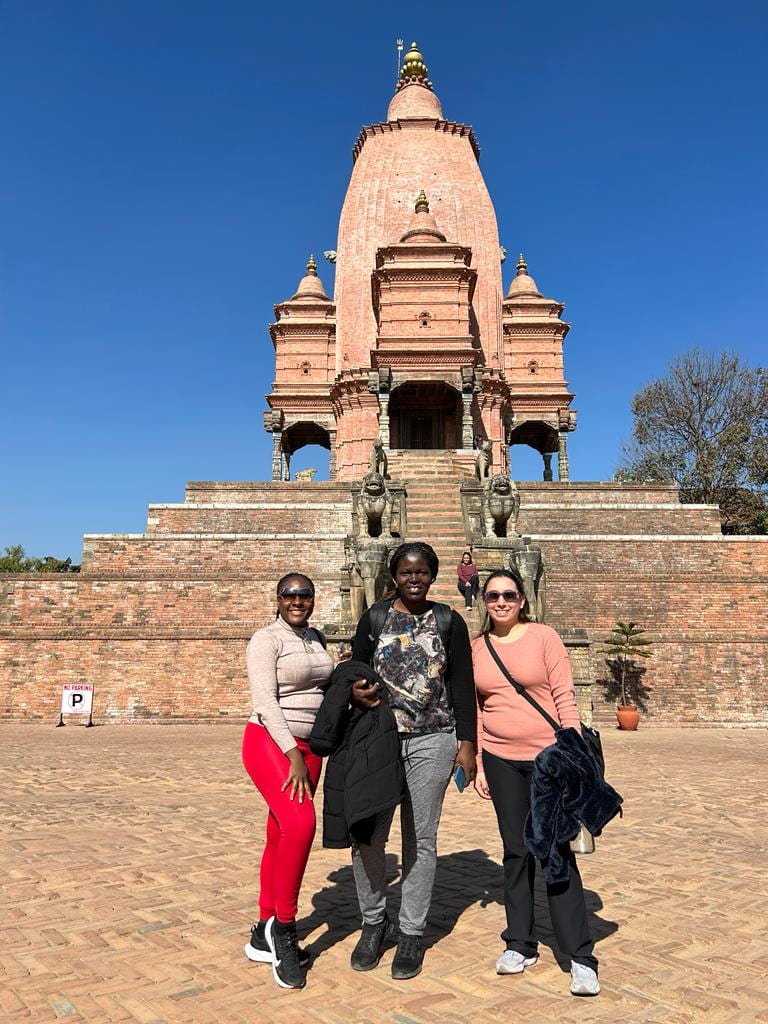
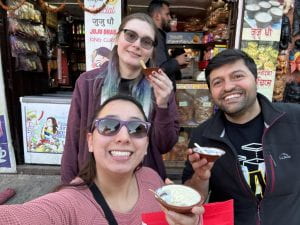
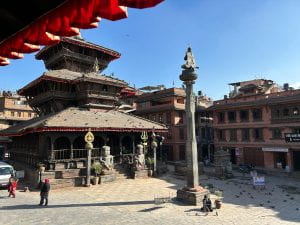
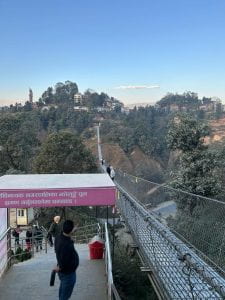

Day 3: Friday January 6 – Sanskriti Farms tour and tree planting
Written by Amir Riyahi
Today we woke up to see the Himalayan mountains for the first time. The view from the farm was somewhat hazy, but once you can locate the mountains, it is almost unbelievable how huge they appear in the horizon. Their magnificence is truly breathtaking. This amazing experience was then only further enriched with the most authentic breakfast we could have asked for. Freshly made Roti with Dhal, homemade plum jam handpicked from the farm was just a burst of true flavors in your mouth. What a great start to the day.
But it wasn’t an all delightful food tasting day, at noon it was time to get to work and dig holes with shovels. The tree planting process started with a presentation given by the Sanskriti research farm manager, Shree Krishna Dhital, M.E., where he explained how he transformed this piece of land he purchased in 2016 from a grassy field into a diverse fruitful farm that it is today. The Sanskriti Farms is an excellent example of participatory development ran locally by a local, to showcase ingenious farming practices and encourage villagers and farmers to partake in diversified and climate resilient farming.

After that we received a demonstration of how to plant a tree by Roshan Shrestha, a local horticulturist and biotechnologist. We learned that providing enough nutrients, water, and proper drainage promotes deeper penetration of the roots. We all took turns using a shovel and a pickaxe to dig a 3 ft cube hole and planted 2 citrus trees.
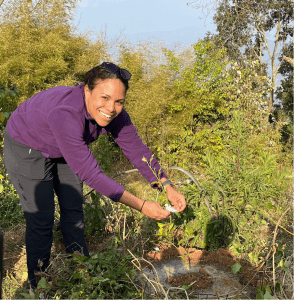
We then took a tour of the rest of the farm, led by Mr. Dhital. We learned about the on-site biogas production, which is fed by human wastewater and cow dung. The biogas produced in this process is used to feed the gas stove in the kitchen.

After the very informative tour, we all gathered around the fire and enjoyed some Thukpa (noodle soup) for dinner.
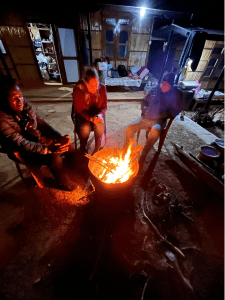
Written by Maeghen Goode
We started the day by visiting the Namobuddha Municipality offices and met with the Mayor, Kunsang Lama. We exchanged introductions where he welcomed us and gifted us with yellow khatas, which are traditional Buddhist ceremonial scarves. The main objectives of the visit were to learn about the work of the municipality and share about our work and research. We learned that the municipality is very new, and that Mr. Sharma is only the second mayor of the area. One the main goals of the municipality is to work on wastewater management and treatment. One of the bigger projects is to install a septic system that would allow for treatment on site and have the residents be able to recycle their water so that the system is autonomous.
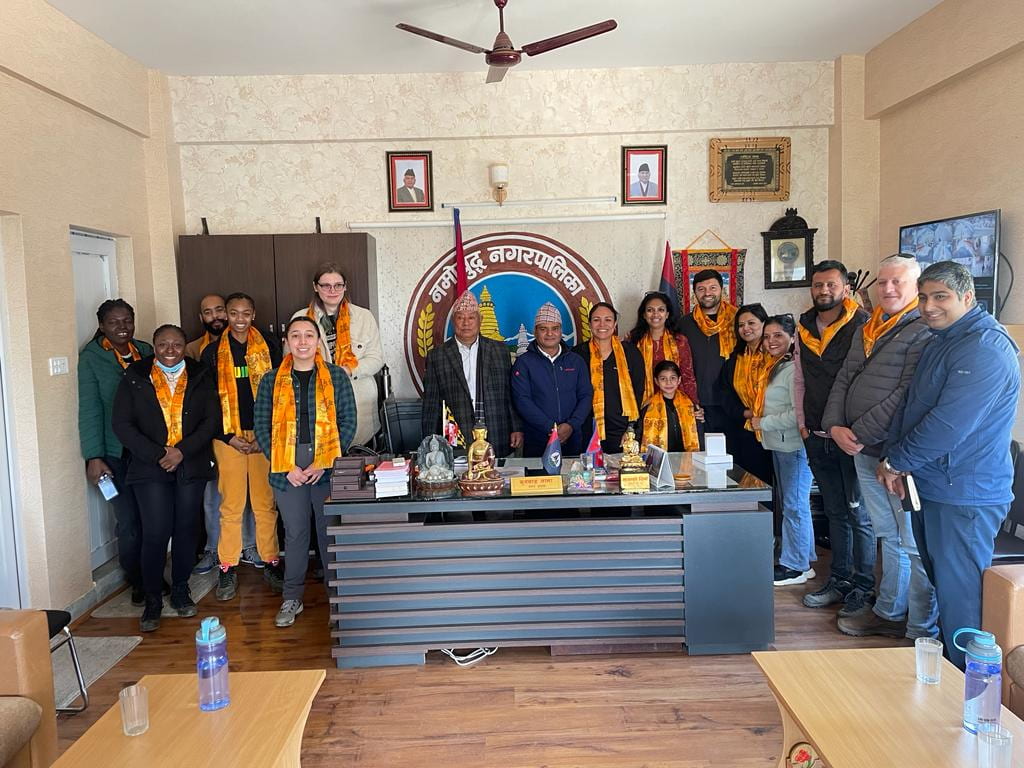
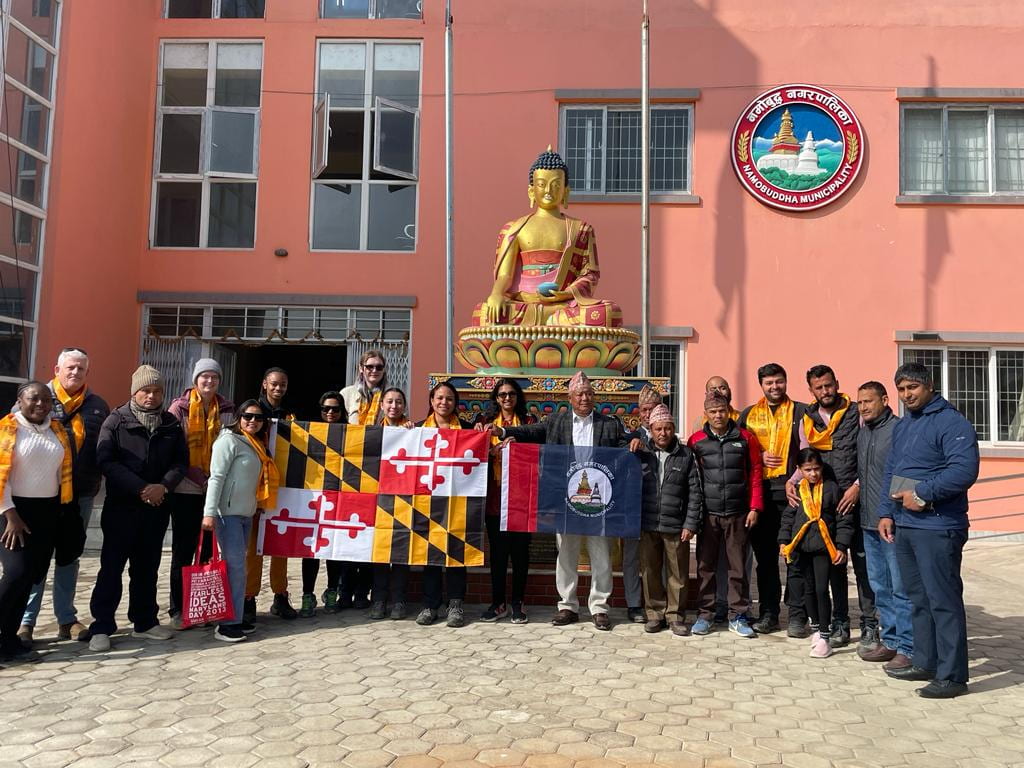
We then visited a community based government school called Shree Janak Secondary School which is the biggest school in the municipality with a student population of 1140. We took a tour of the school’s facilities, with a focus on their waste processing and drinking water. The school has a rainwater catchment system and on-site agricultural and animal farms. Tomatoes, cauliflower, rice and cucumbers are grown in the agricultural fields, while the animal farm boasts chickens, cows, boats and buffalo. The school principal described how the students learn agricultural management in a “Learn to Earn” system. Some of the goats are raised on the farm for a certain amount of time and then they are given to the students. We ended the tour with a discussion about water sampling in the area and brainstorming how our collaborator from Israel, Dr. Clive Lipchin, could potentially install his on site wastewater treatment unit known as the Laguna Innovation System. This is a plug-and-play off-grid wastewater treatment system that recovers high quality water for reuse in irrigation and other non-potable uses. This would be instrumental for the school since their wastewater is not currently treated, so this offers and irrigation solution for their agricultural crops. Additionally, the system is solar powered and therefore entirely self-sufficient.
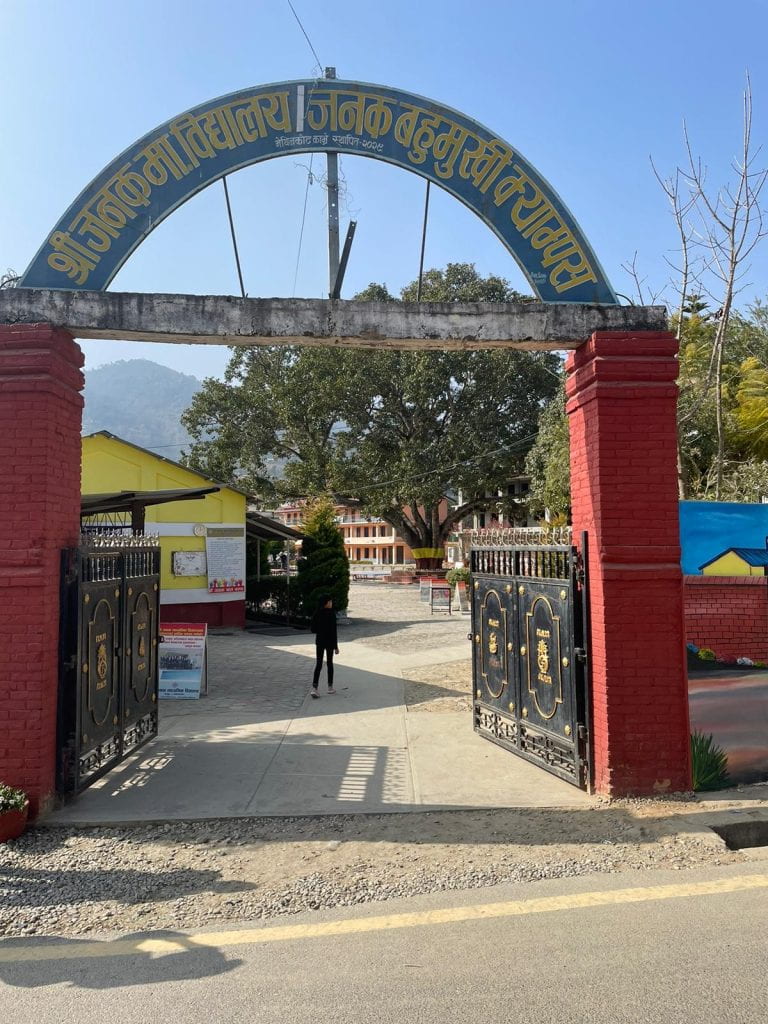
Finally, we went to the Namobuddha Monastery. Unfortunately, we arrived after the monastery shrines and halls were already closed, but we saw a beautiful sunset.
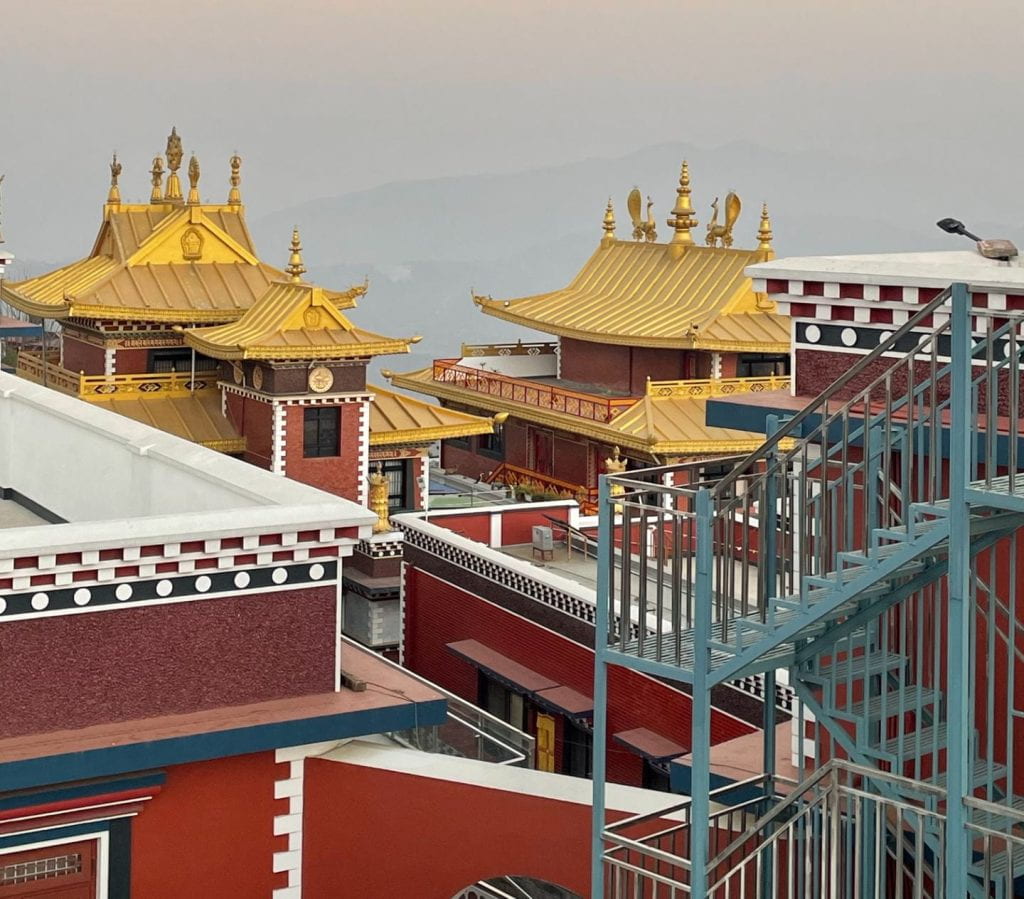
Written by Maureen Nabulime
Our first stop today was a visit to Shree Mathutrapati Primary & Secondary School in Phoolbari, which was a 25-minute walk from our homestay. We also got a tour of the village along the way, stopping to chat with residents as we walked. At the school we assessed the suitability of establishing a Laguna wastewater treatment facility. The school hosts 140 students and a health center for the ward which will soon be shifted to a new building currently under construction by the Federal Government. We observed the school’s facilities such as the students’ toilets, hand washing sinks, and rainwater harvesting structures among others. We had a discussion about the site suitability and Clive noted that due to the small amount of wastewater produced at the school, it may not benefit as much from a Laguna system. Upon leaving Sanskriti Farms for the last time, our lovely hosts blessed all the fellows with a Tika mark on their foreheads. We will truly miss the homestay, especially the food and wonderful hospitality of our hosts, the Dhital family!
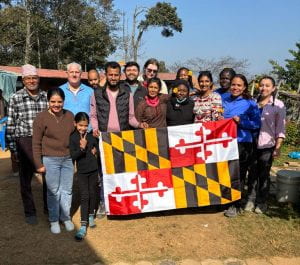
We then returned to Shree Janak secondary for water sampling, and collected water samples from six different sites at school. We collected wastewater samples from two different locations, and drinking water samples from the their well water and municipal water sources. We then took these to a collaborator’s lab at Dhulikhel Hospital for storage. We will return tomorrow for further processing of the samples.
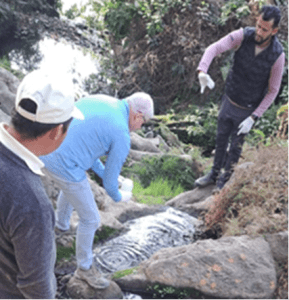

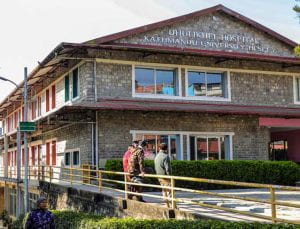
Written by Taiwo Alawode
Our day began with a sumptuous breakfast at our hotel, the Dhulikhel Lodge Resort (DLR). After breakfast we walked to Dhulikhel Hospital, which was conveniently located about 15 minutes away from our hotel. We had an incredible experience visiting Dhulikhel Hospital, beginning with meeting Dr. Biraj Karmacharya, the Director of Public Health, Community Programs and Global Engagement. Dr. Biraj gave us a fascinating insight into the hospital’s background. We had the opportunity to learn about the incredible work being done at the Hospital. Dhulikhel hospital, established in 1996, has become a beacon of hope for over 2.5 million patients. Their dedicated team of 1,700 staff members tirelessly serve 2,000 patients daily, prioritizing quality healthcare for those in need. We were particularly impressed to learn that 50% of the hospital’s internal revenue comes from patient fees, while they also generate revenue through academic programs and student fees. Other sources of external revenues include philanthropic donations and governmental support for infrastructural development. Additionally, their commitment to sustainability and food-energy-water nexus is evident as they generate 25% of their electricity from solar energy.
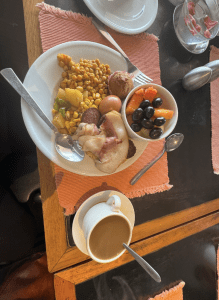
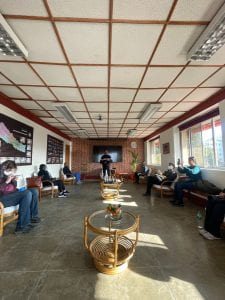
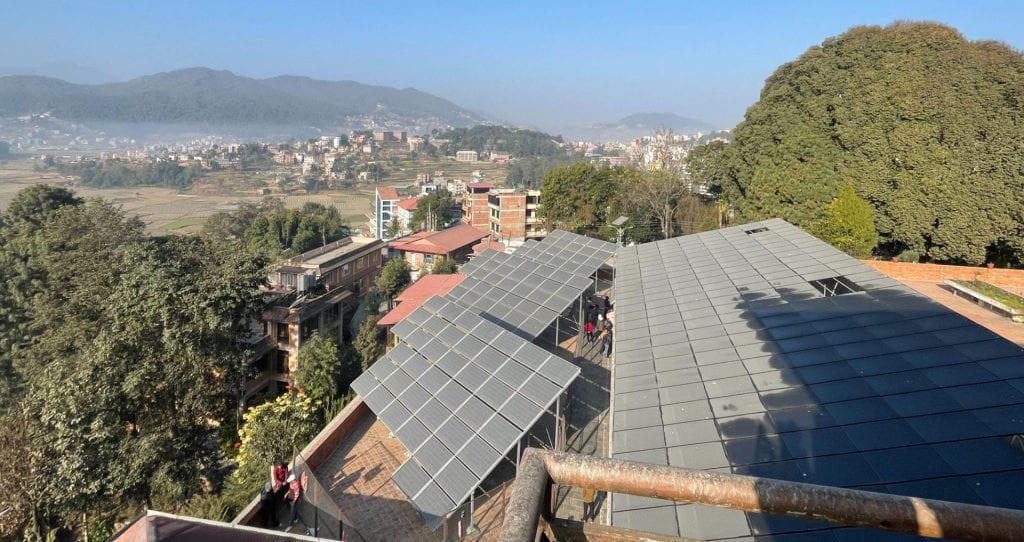
The hospital’s dedication to sustainability extends beyond their use of solar energy. They are actively involved in community outreach programs aimed at helping underserved communities and promoting overall wellness. These initiatives include conducting agricultural projects like tree planting and empowering households to start their own farms. Additionally, as part of their community outreach initiatives, the hospital provides micro-finance loans to community members at a 4% interest rate, further supporting economic growth within the community.
We also paid a visit to the hospital’s biological wastewater treatment plant, where 0.2 million liters per day of wastewater is being treated. It was fascinating to see how the entire process works, from the screening chamber where the waste water is received, to the settling of sediments in the cyclone and settler. The water then moves on an anaerobic bioreactor before going through horizontal and vertical gravel beds for filtration. Finally, after approximately 32 hours of residence time, the treated water is discharged into the river as effluent. Other activities carried out at the hospital include filtration of water samples collected at Shree Janak Secondary School.
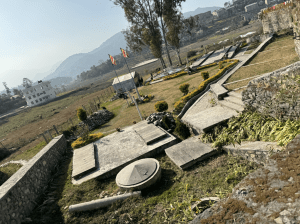
Overview of the wastewater treatment plant, which doubled as a “therapy garden”
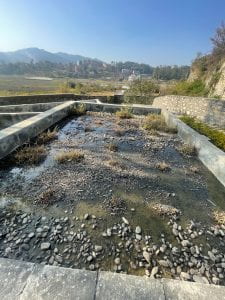

We wrapped up the day with the “1,000 steps” hike in Dhulikhel, which provided gorgeous views of the city right before sunset. The hike was challenging yet fun, and really dis turn out to be comprised of about 1,000 steps! The walk up was a good workout and the view was definitely worth the effort. At the top of the hill were the remnants of what was surely once a beautiful a temple, and a large picnic area with food vendors.
Written by Camila Proano
Today we had breakfast at the hotel and enjoyed an amazing view of the Himalayan range. It was the clearest day since we’ve been in Nepal! After breakfast we walked through the town of Dhulikhel to their drinking water treatment plant. Upon our arrival, the plant workers were very welcoming and gifted us with Katas. Dr. Biraj Karmacharya, who we met yesterday at Dhulikhel Hospital, joined us at the plant and facilitated translation of the explanations provided by the plant officials.
We learned this plant was inaugurated on December 1997, and was a collaboration with the German government. The plant operators showed us their filtration systems and water chlorination tanks, and described how the source water makes its way to the plant. They also showed us their lab facility and the types of measurements they gather to ensure clean water is leaving their plant. Some of the challenges they face, include aging infrastructure and intermittent water supply. They have multiple contamination points after the water has left the plant, like sewage pipes, and water storage tanks at individuals homes. We also met with members of the Dhulikhel Drinking Water and Sanitation User’s committee, which is comprised of community residents who advise the plant officials.
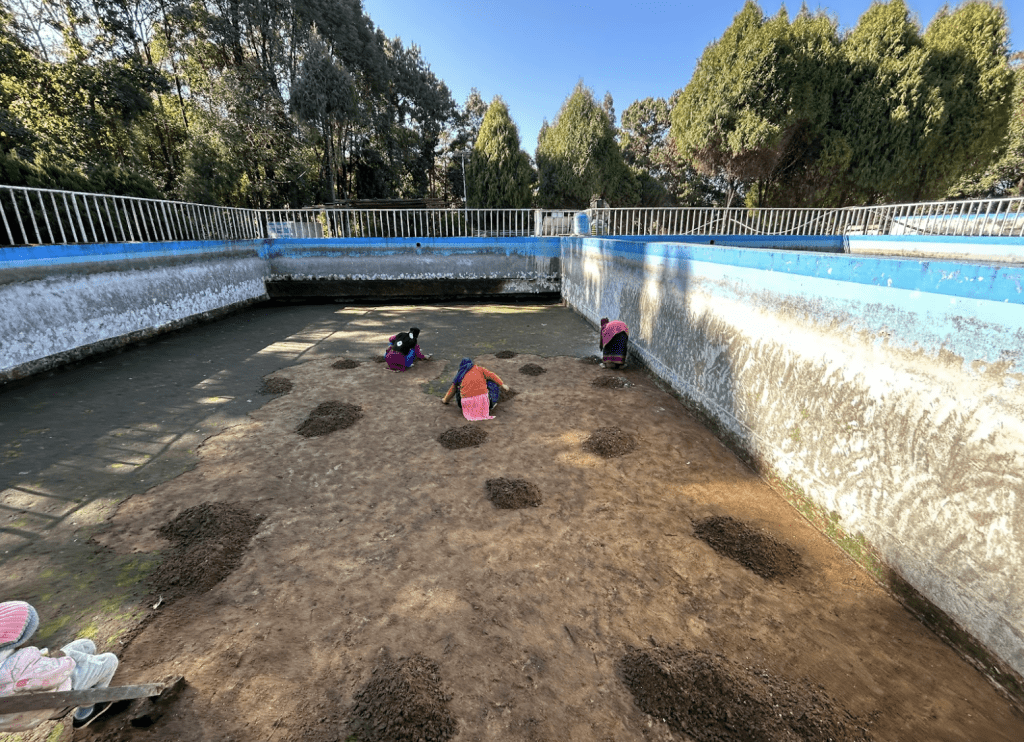
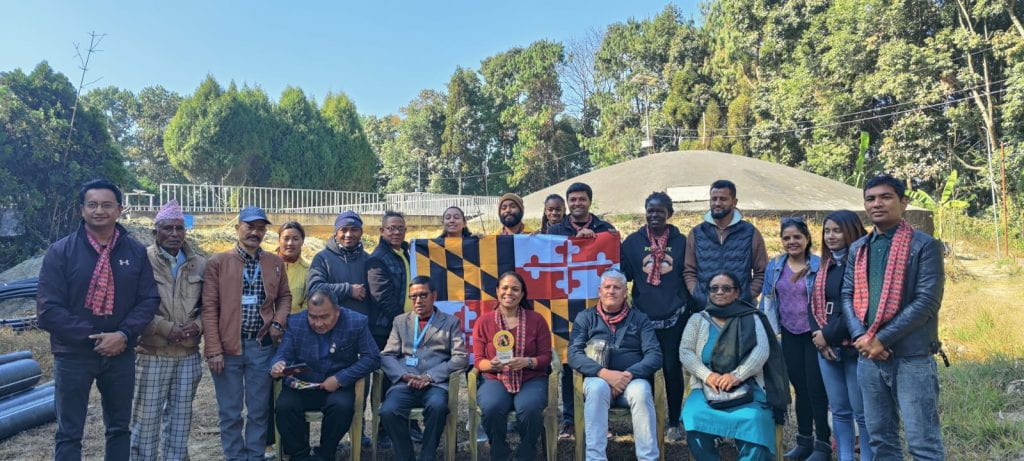
We then left the plant and walked across the Dhulikhel valley to Kathmandu University (KU) where we had a very tasty lunch at a local shop. The walk to KU took us over an hour, but it was good to stretch our legs and see more of the “old city” of Dhulikhel. After lunch we met with Dr. Bim Prasad Shrestha, Professor in KU’s Department of Mechanical Engineering, who talked with us about his current research projects and some of the graduate programs offered at KU. His research assistants then showed us the lab facilities for the School of Science and Aquatic Ecology Centre, and chatted with us about their projects. We then returned to the hotel to rest for the afternoon. We were able to have a few more pictures of the Himalayan range.

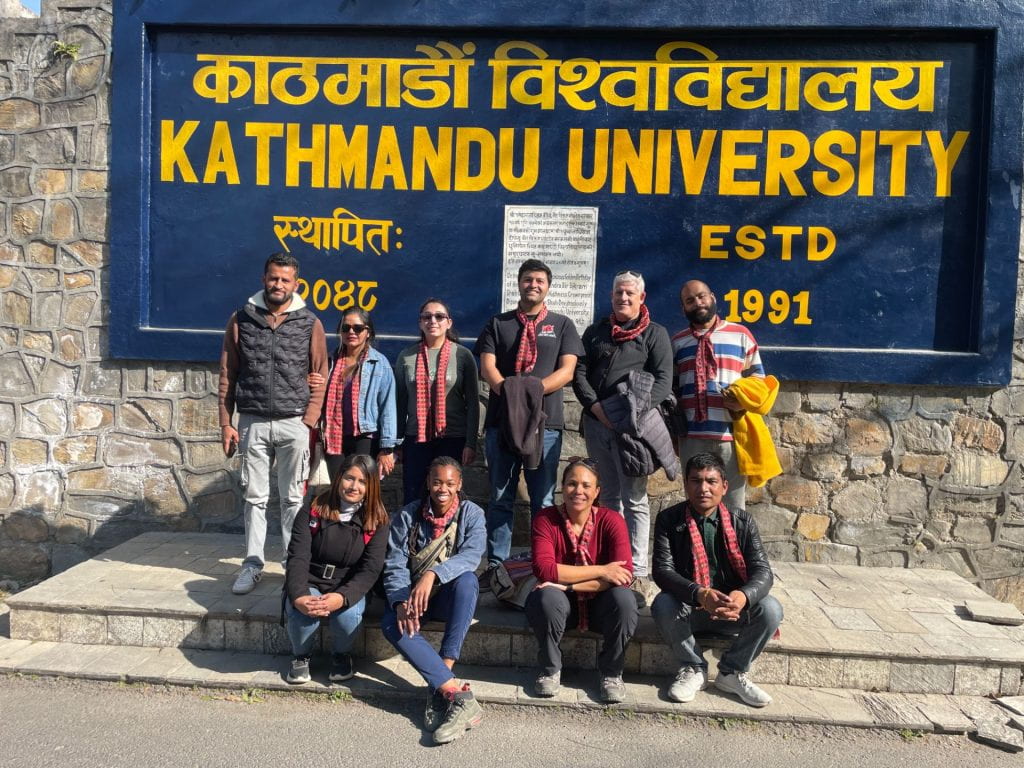
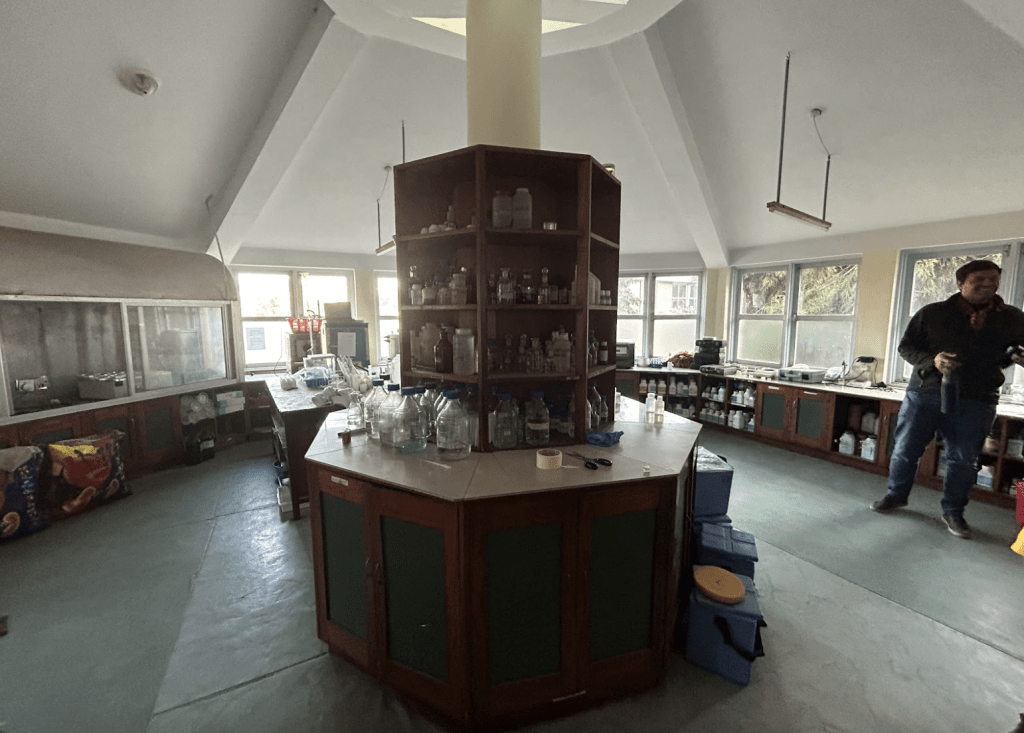
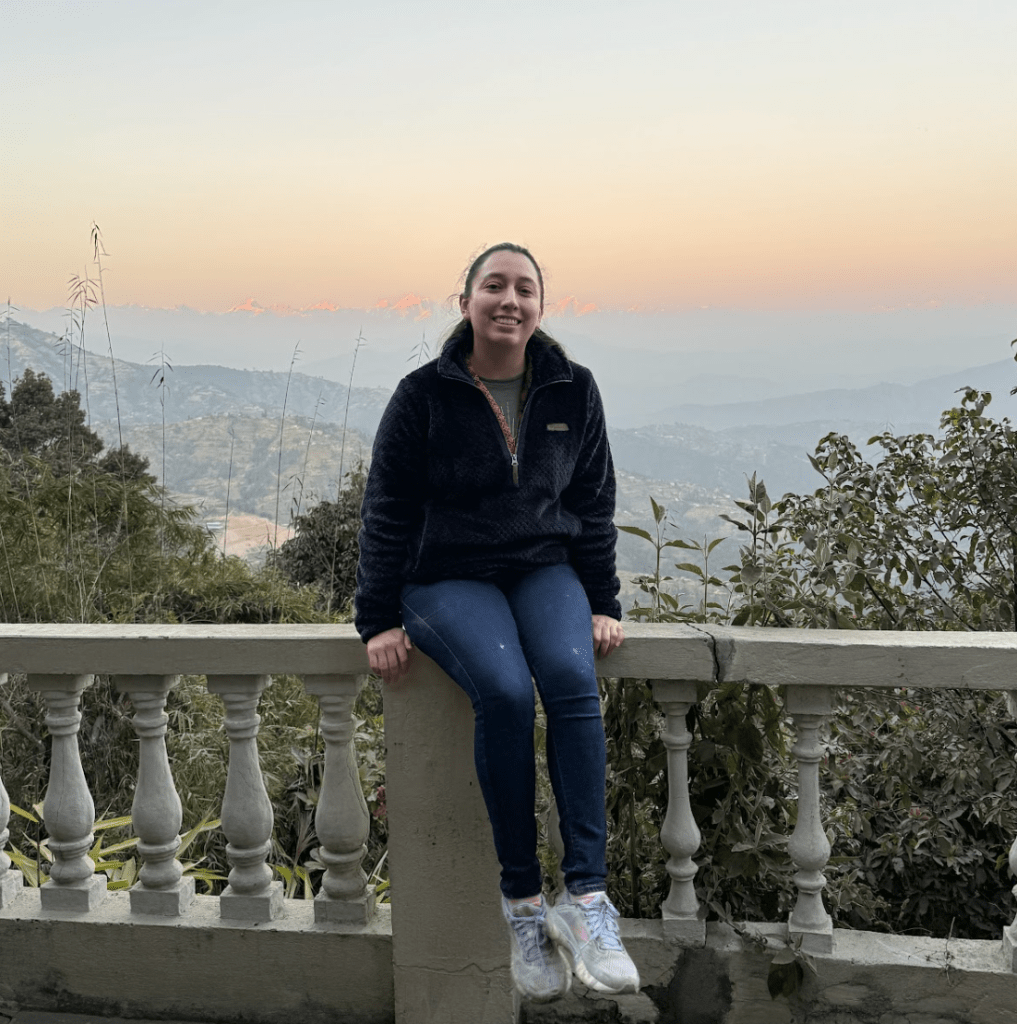
Written by Maeghen Goode
We checked out of the Dhulikhel Hotel resort and started the day by visiting the Shree Chandeshwori Temple. There is myth that the Chandeshwori Temple is the place where the mother goddess (Sati / Parvati and in Banepa known as Chandeshwori) defeated the demon Chanda. We continued to be amazed by the beauty of the ancient architecture reverence for these sacred spaces.
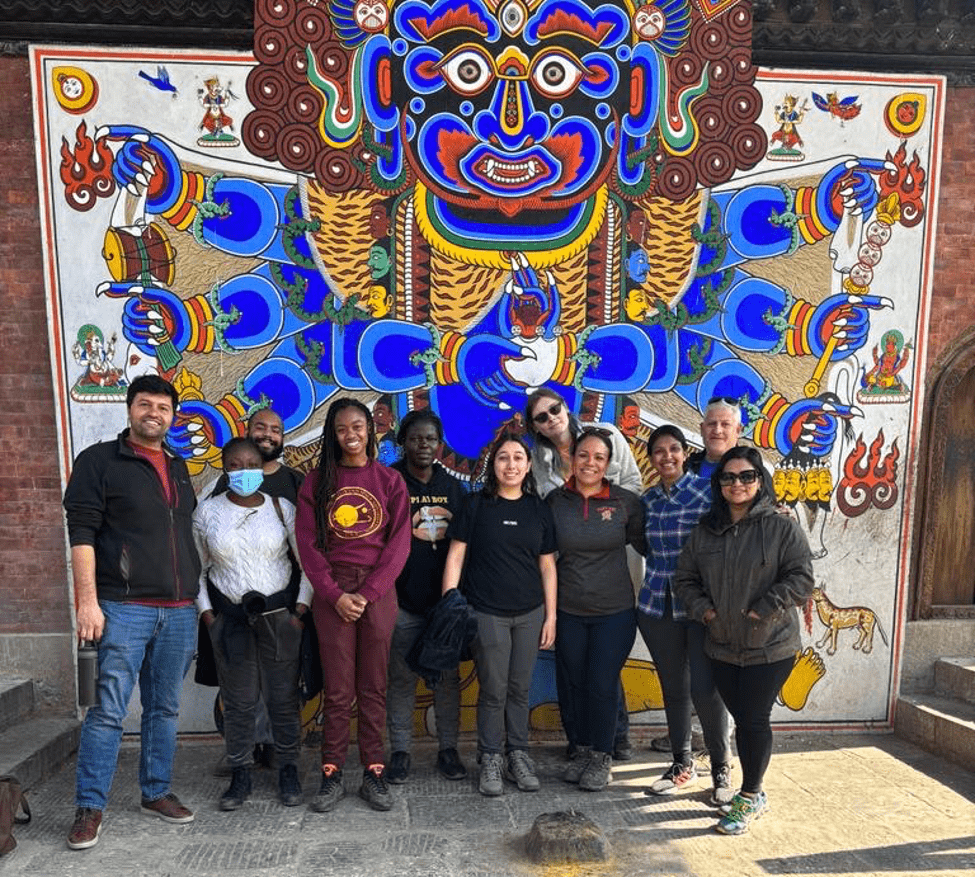
Our next stop was to Changunarayan where we saw yet another expertly crafted ancient temple. The Changunarayn Temple has a collection of statues and sculptures and is famous for its beautiful crafts in wood, stone and metal. On the way we saw vendors and shops many of whom sold authentic yak wool and cashmere pashminas and blankets. As we were driving to our next location we passed by the military academy and training camp and saw many of the cadets returning home for the day. We ended the day by watching the sunset at Buddha peace park, Shantidada Nagarkot. At an elevation of 2,195 meters, Nagarkot is considered one of the most scenic spots in Bhaktapur District. It is known for breathtaking sunrise and sunset views of the Himalayan mountains and Kathmandu Valley. The gorgeous scenery makes it a popular hiking route for tourists, and we passed many hotels and resorts on the way to our own hotel. The sunset views at the Buddha peace park did not disappoint! Once again, it was impossible to capture the true beauty of the sunset with a camera.
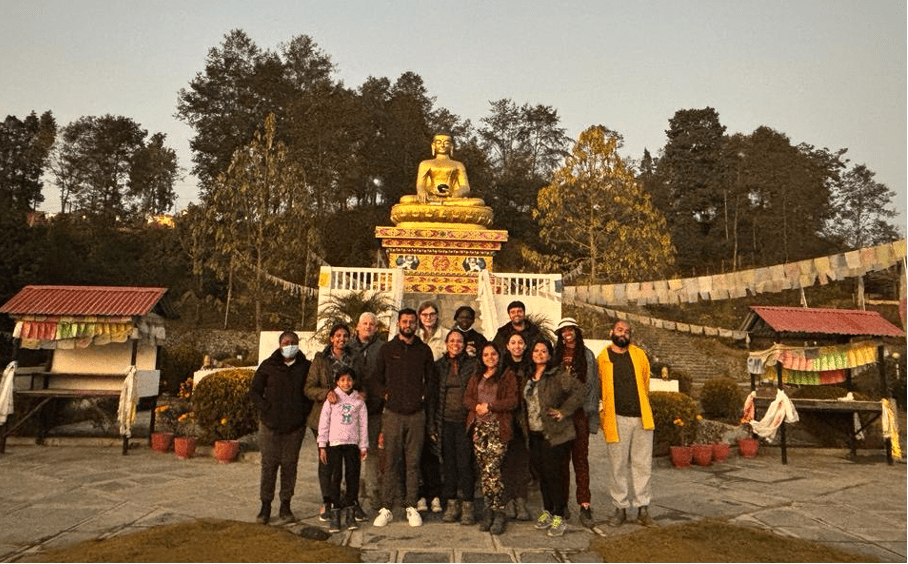
Written by Maia Karpovich
Today was, in my assessment, one of the most culturally enriching of the entire trip.
In the morning, those who got up sufficiently early could see a beautiful sunrise from the Nagarkot resort, located at about 1800 m above sea level. I preferred to sleep in, however–it was on the hazy side anyway.
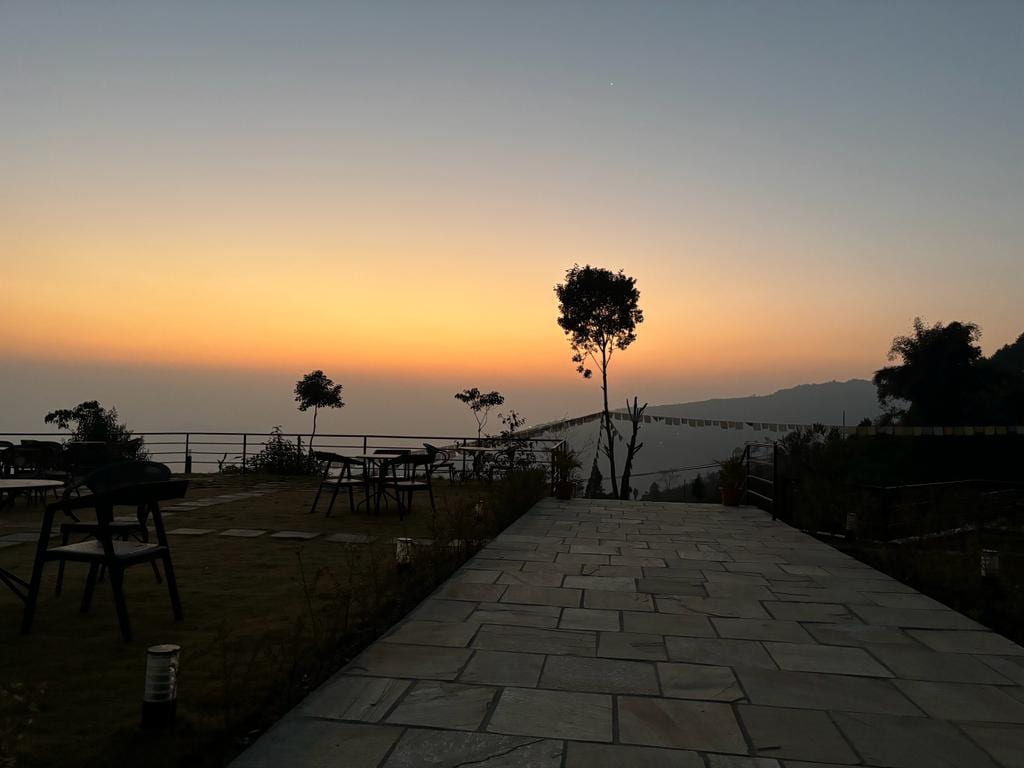
After a rather usual Nepal hotel breakfast (various small pancakes, curries, egg omelets), we left down the excessively twisty mountain roads to locations in the middle of town, packing our bags into one large minivan. This seemed perilous, even if it was not particularly so, but did give us the best views yet of the Himalaya to the north at about mid-morning, particularly the pyramid-shaped 7000m peaks of Loenpo Gang and Dorje Lhakpa close to Kathmandu. The highest mountains of the range tend to have obstructed sightlines from the valley.

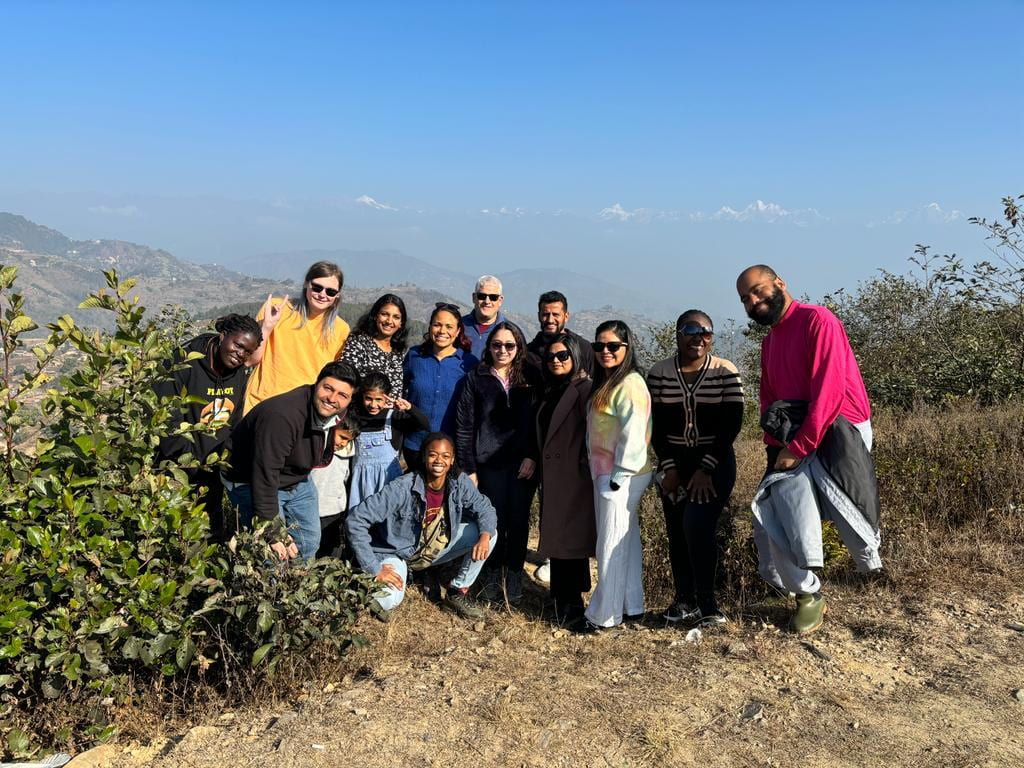
Negotiating an hour or so of traffic led to a meeting at the famed Shechen and Shedrup monasteries surrounding the Boudhanath stupa that we visited last week. Our first stop there was an audience with Wangchuk Topden, successor of the famed Rinpoche of this Thrangu Tashi Choling Monastery that has done much to popularize Tibetan Buddhism in the West alongside many others of the Kagyu school. After explaining the ritual practices and basics of the monastery, our group got to ask him a few questions about Buddhist teachings and daily life. Here’s a selfie of the two of us.
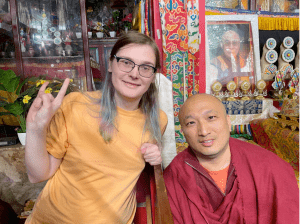
Of particular interest to me are the hell realms which have a marked presence within Buddhist cosmology, depicted within the pointy teeth of Yama on many of the local thangka sold in the market, and memorialized elsewhere within theme parks such as Haw Par Villa in Singapore (Yes, Hell charges admission). To the Rinpoche, heaven and hell are what the individual make of it–and are ultimately realized based on the subjective experiences and sensations of a being affected by various kinds of karma.
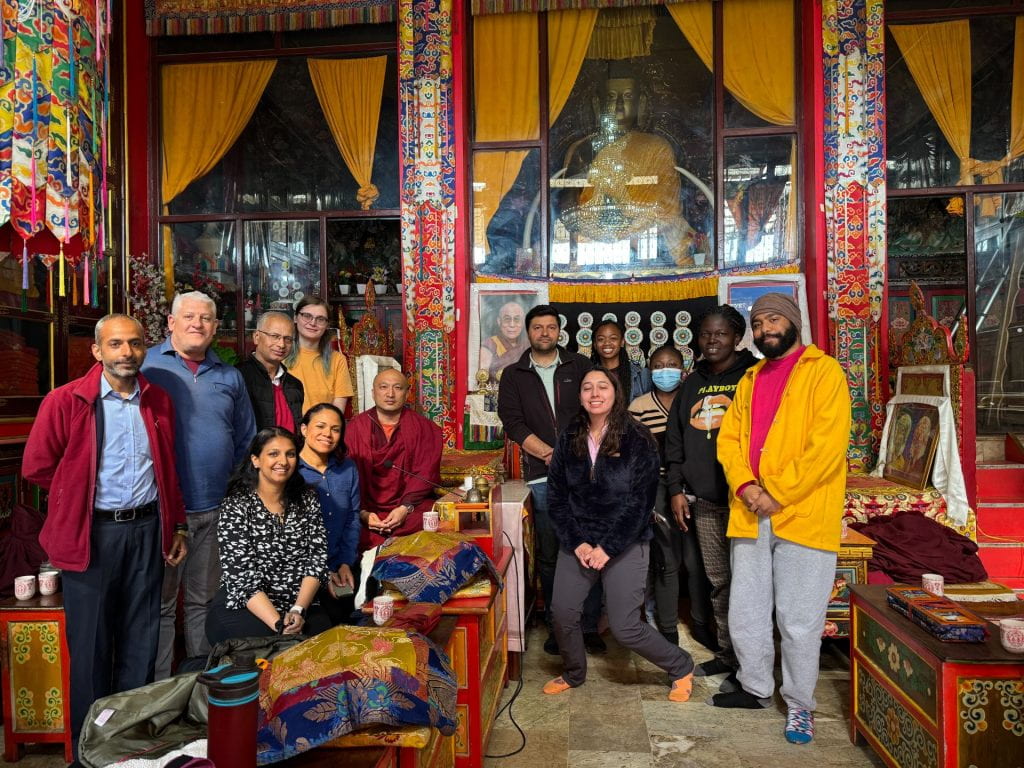
Experienced mages (and many Buddhists) are however acutely aware that such a metaphorical view of hell does not at all preclude it from being real. Playing fast and loose with altered mental states or the wrong spiritual entities can and have lead to people being tormented and eaten by demons for subjective trillions of years. Be warned.
After our group’s conversation, another of the monks led us to see the shrines within various parts of the two monasteries. In addition to many statues of Buddhas past, the Buddha future in the form of the Maitreya, and Padmasambhava (the founder of the oldest Nyingma school), we saw a shrine devoted to Tara, a bodhisattva representing various qualities of compassion, deliverance, and empowerment. In her twenty-one forms, she is shown devotion by the spreading of rice throughout the shrine, and lighting of candles and incense.
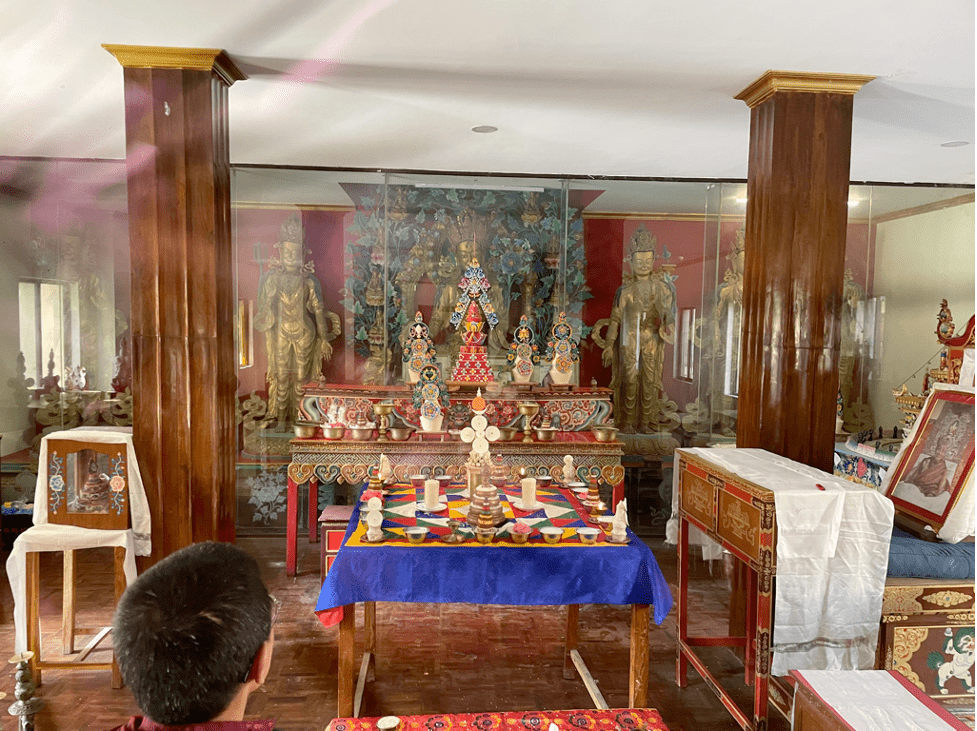
At midday, we had lunch at Utpala cafe, associated with the monasteries. Plenty of delicious vegetarian food was served, including rice-based dishes and stir-fried noodles, and the naan was (to Rianna) the best she had ever eaten in her life.
Later that afternoon, we travelled to the residence of the Israeli ambassador to Nepal for a social event regarding the FEW Nexus. After a rather strict passport check, we mingled over hors d’oeuvres before a series of presentations by local leaders involved in water conservation. Clive gave a moderate length talk about his efforts earlier with farms and the elementary school in Namobuddha, and so did Leena and Rianna about Global STEWARDS.
After the presentations, the ambassador gave each of the presenters gifts. Clive received a necklace of 54 seeds of a local spiritually significant tree. Leena and Rianna each received a copy of books detailing the water conservation efforts of Israel, and Shree Krishna was gifted…a bucket of kitchen compost. This may have been the most unusual diplomatic gift I have ever seen.
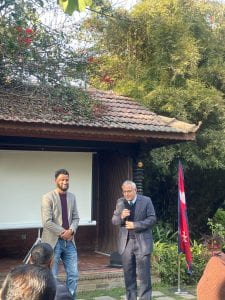
More socializing followed as did a bunch of photo opportunities. The mayor of Namobuddha (who we met last Sunday) seems to have recognized me as a big shot within Maryland, and so roped me into a few group photos.
While the political situation since 7 October could not be entirely avoided today, we were glad to end on a note of proud international cooperation. I sincerely hope that all the world’s peoples may have access to clean drinking water and the basic necessities of life, and work together on a basis of peaceful cooperation.
Written by Tavis Mansfield
Within our last day we continued to explore the Thamel area of Kathmandu. As we attempted to get our last souvenirs we noticed that some of the stores were experiencing power outages. The store owners didn’t seem surprised by this, but to us it highlighted the continuous energy challenges that the country experiences. The cashmere and yak wool stores seem to be a cultural and tourist staple as there was one on every corner. This showcased the value of the agricultural sector seeping into commercial sector.
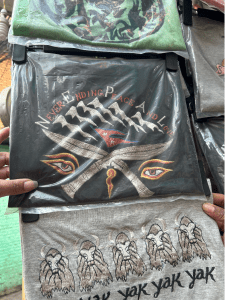

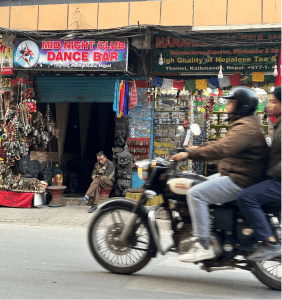
We ended our trip with a delicious dinner Nepali Chulo Restaurant, a traditional Newari restaurant near to Thamel. Our journey become full circle as we met up with Mr. Kapil Regmi, the Engineers Without Borders representative we met on our second day in Kathmandu who has initiated water related projects within Nepal. The community of scholars and scientists working within the FEW Nexus in Nepal have been welcoming and highlight the global community that is focused on environmental issues. Along with dinner we were treated to a cultural program, which included traditional Newari dancers and performers.
